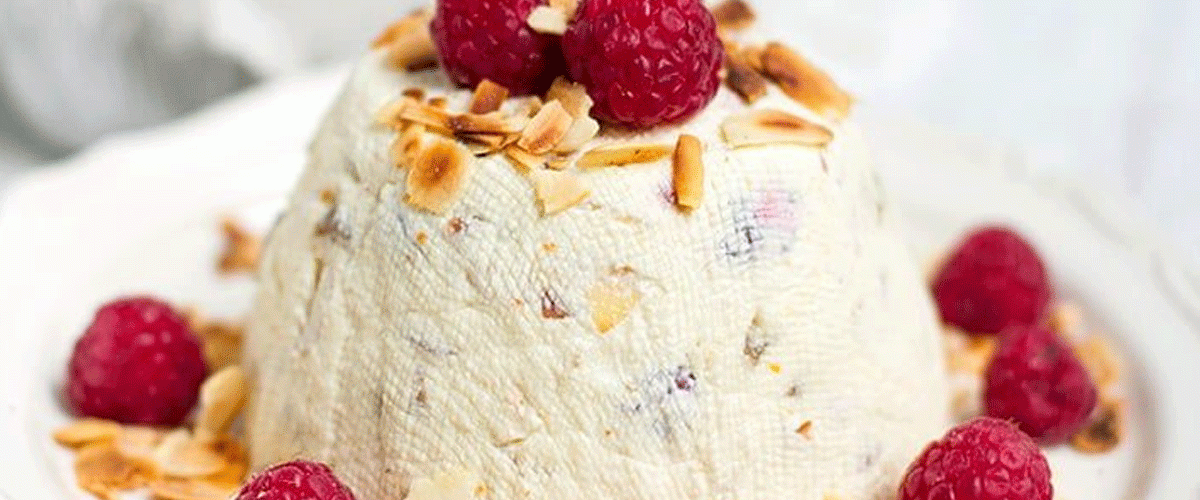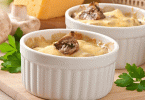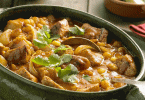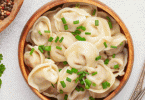Pashka (Russian Easter Dessert) Recipe – Russian Special
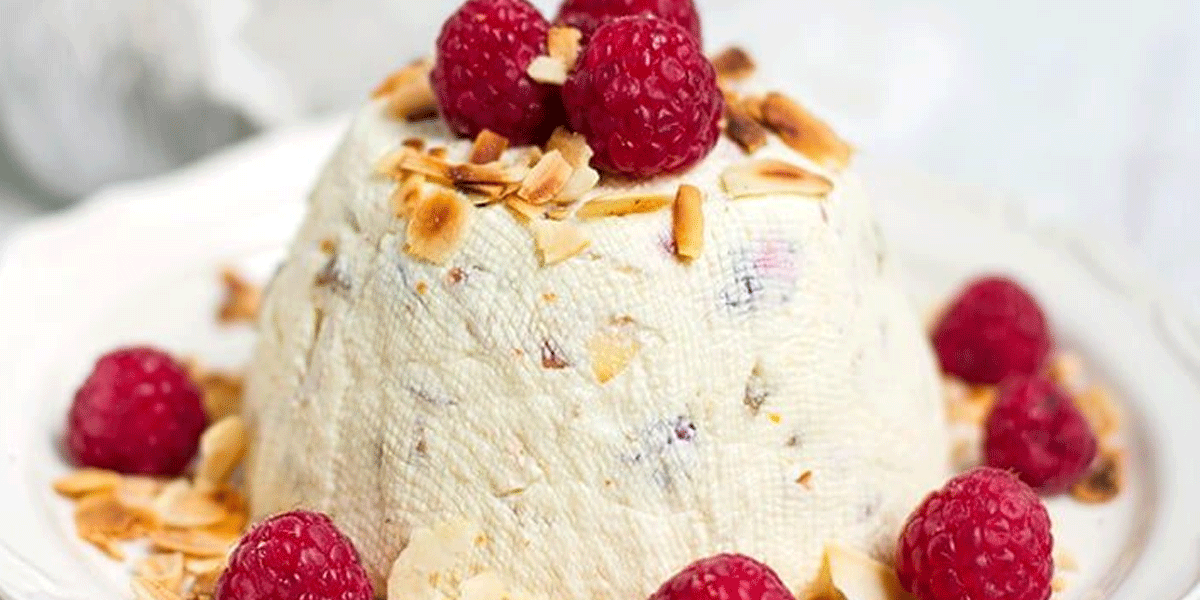
Pashka is a cheesecake-like dessert or breakfast food that is usually eaten with thick-crusted bread (but I like it plain too). Though no cooking is needed, it does chill overnight. My bestemor has made this for me since I was a child and I have always loved it!
- Prep Time20 min
- Cook Time20 min
- Perform Time24 hr
- Total Time24 hr 40 min
Pashka (Russian Easter Dessert) Ingredients :
- 2 pounds farmers cheese, or dry curd cottage cheese
- 5 large egg yolks, at room temperature
- 2 3/4 cups confectioners’ sugar
- 1 cup heavy cream
- 1/2 cup coarsely chopped almonds
- 1/2 cup golden raisins
- 1 cup candied citron, chopped
- 2 teaspoons vanilla
- 8 ounces (1 cup) unsalted butter, softened and whipped
- Almonds, for garnish
- Glacé cherries, for garnish
- Candied citron, for garnish
- Green leaf candies, for garnish
How To Make Pashka (Russian Easter Dessert)
Pass the farmers cheese through a sieve or food mill and set aside.
In the top of a double boiler, mix egg yolks with sugar. Add cream and heat over barely simmering water, stirring constantly, until bubbles form around the edge of the pan. Don’t overheat or the eggs will curdle.
Remove from heat and add reserved cheese, almonds, raisins, citron, and vanilla, mixing well. Add butter and continue stirring until the mixture cools. This long stirring gives the paska a smooth and velvety texture.
If you have a paska mold, line it with a double thickness of dampened cheesecloth.
Pour the mixture inside and cover with a double thickness of dampened cheesecloth. Place the lid or a small plate on top and weight down with a heavy can. Place a bowl under the mold to catch any runoff and refrigerate for 24 hours.
Unmold onto a serving plate and decorate with almonds, glacéed cherries, candied citron, and green leaves, if desired. Cut into thin slices as this is very rich.
If using a new terra cotta flower pot, proceed as above.
If forming into a ball, over the sink, wrap the mixture in a double layer of dampened cheesecloth and twist into a tight ball.
Place in a colander with a bowl underneath to catch any moisture, cover with a plate and weight down with a heavy can. Proceed as above.
For a perfectly round ball, close the cheesecloth with butcher’s twine and then tie it to a rack in the refrigerator, suspending it over a bowl to catch drips.

